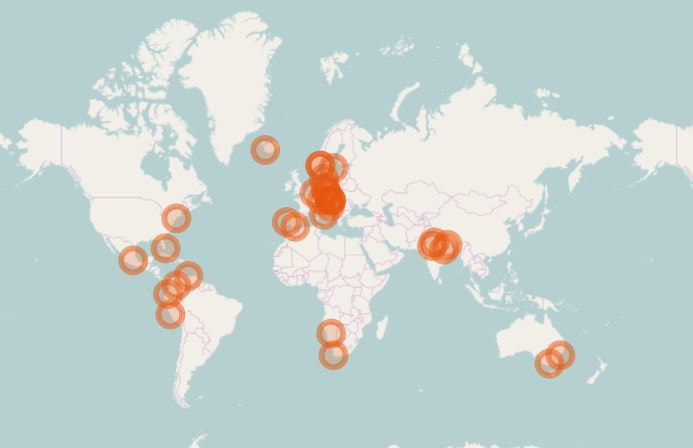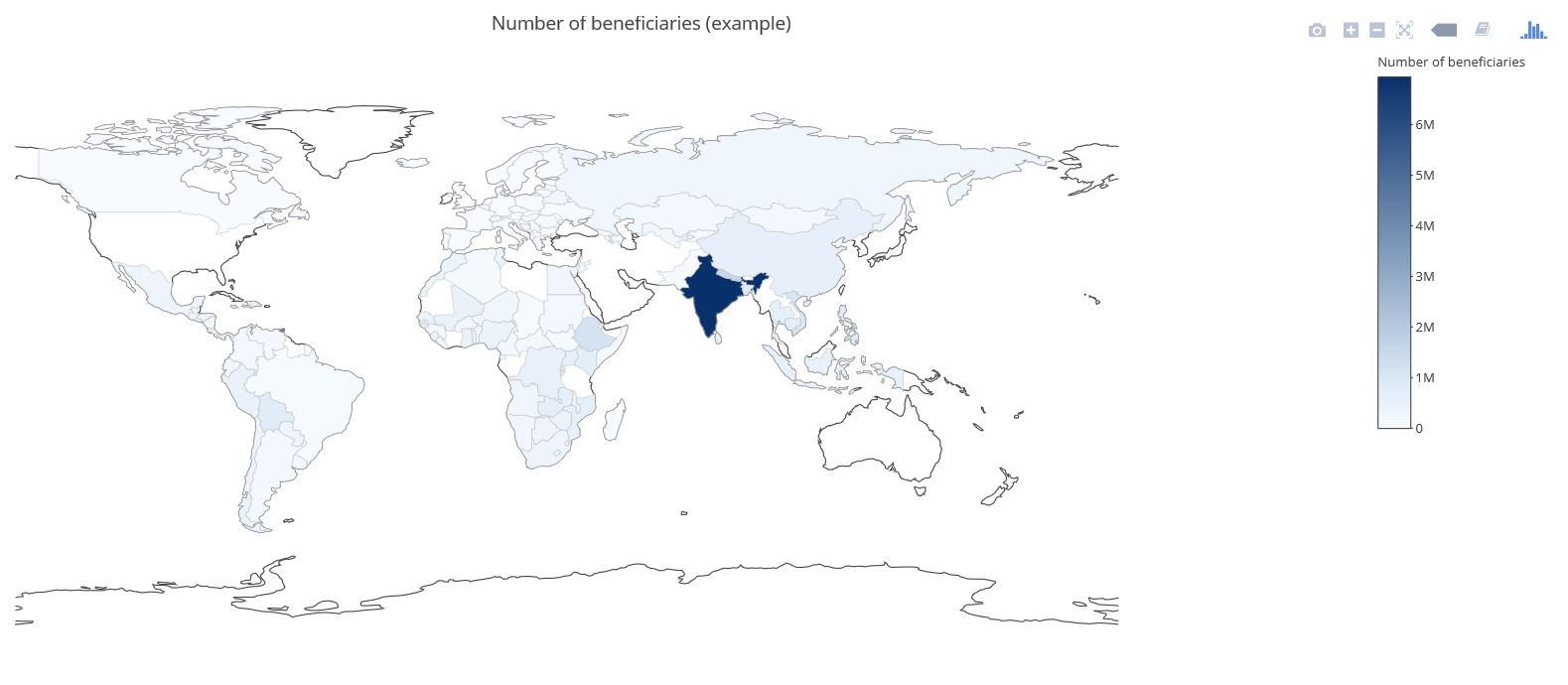|
Visualizing data in maps can be a bit of a challenge although widespread tools like MS Excel recently got improved functionalities in this context (see for example our blog post called Where the donors are from earlier this year). There are two R packages that are definitely worth taking a look at when it comes to producing maps with data. The first one is called Leaflet. Leaflet is an open-source JavaScript library for creating and customizing interactive maps. These maps can be used directly from the R console, within R Studio as well as in in so called Shiny Apps and R Markdown documents. Leaflet is becoming more and more popular, probably also because of its use in online media (see these examples from the NY Times and the Washington Post). Using Leaflet is fairly easy. A very simple example shows some of the major cities I have visited on a world map and attaches a little comment popup to them. The data underneath is straightforward (longitudes, latitudes, comment) and the code is quite self-explaining. Click on the Image below to see the interactive result: Another recommendable package is Plotly (also spelt Plot.ly like its URL). Plotly is a virtual data analytics and visualization tool. The platform as such invites to play around. Plotly contains libraries for languages like Python, Perl and MATLAB and last not least a package for R. I have created a simple example with made-up data on the number of potential beneficiaries per country on a world map. This is the result (click image below): There are sources with way more impressing showcases than mine, e.g in the R Graph Gallery. Three examples I found inspiring in a broader fundraising and charity context are maps with illustrations of Nepal earthquakes as well as a London income map.
The possibilities with Leaflet and Plotly seem limitless. I have made the experience that working with the two – after some initial tweaking with the data and getting used – is really fun!
2 Comments
|
Categories
All
Archive
June 2024
|

